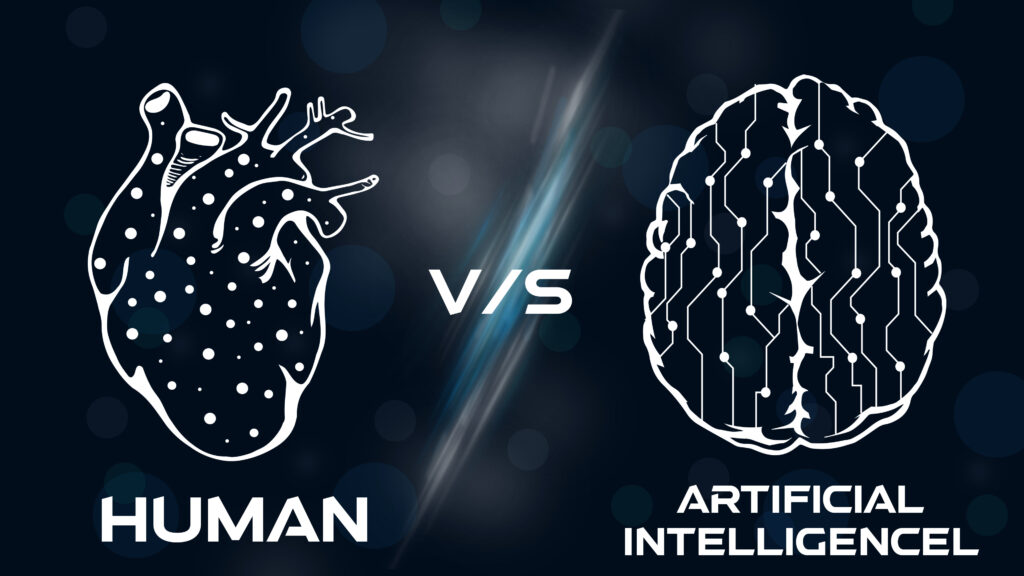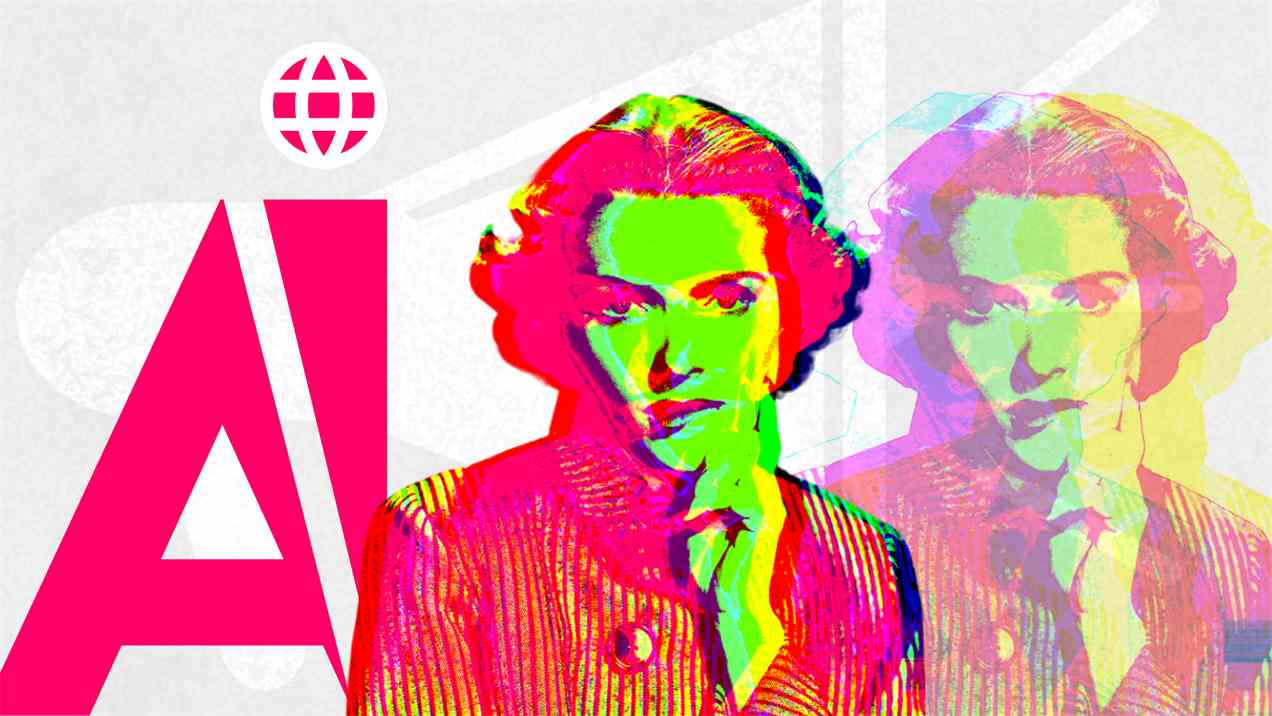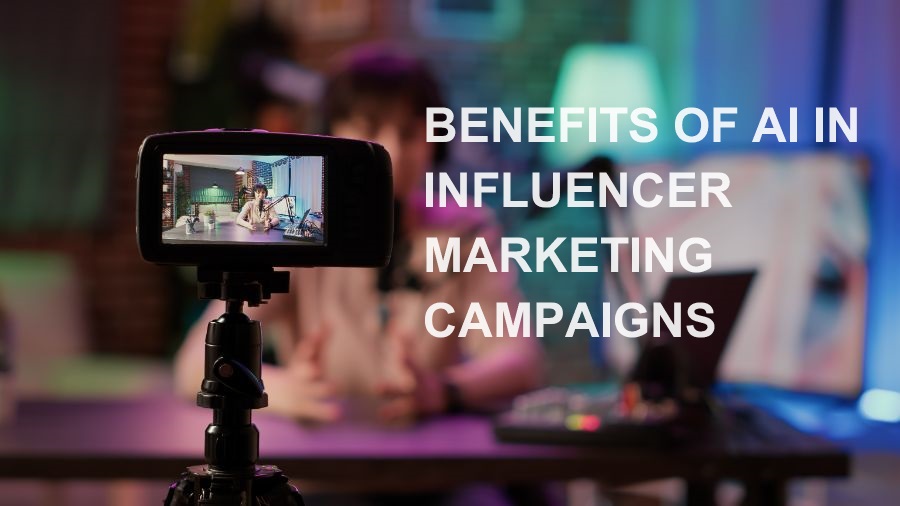How human editors improve AI-generated content isn’t just a nice-to-have; it’s essential. Think of it like an expert chef who transforms basic ingredients into a feast for the senses. I’ll show you why the human touch turns cold code into warm, relatable stories. We mix tech smarts with human hearts to craft tales that resonate. Dive into how blending human wisdom with AI precision creates content that clicks, engages, and stays true to the facts. Get ready to see the art of perfecting AI efforts through a human lens, because when we join forces, the result is nothing short of magic.
Why a Human Touch in AI Content Creation is Indispensable
Enhancing AI Content with Human Insight
Machines make text fast. Yet, they lack warmth, nuance, and true understanding. That’s where humans shine. We feel. We live. We understand. That deep insight and empathy are what our human touch adds to AI content. As an expert working hand-in-hand with AI, I see how this makes a big impact.
When I look at a draft by AI, my first job is to check for awkward phrases. I look for spots where the words don’t sound quite human. Maybe the AI chose a word that’s correct but not perfect. I find the perfect one. This turns cold, robotic sentences into warm, engaging messages that connect with you, the reader.
The Editor’s Crucial Role in Refining AI Narratives
AI goes wide, covering many ideas fast. But it might miss the point, becoming a tangled web. That’s where content editing by professionals steps in. A human editor untangles this web.
We spot the gems within AI-written content review and polish them to shine. It’s not just about finding errors. It’s about feeling the writing’s pulse and setting its rhythm to the heartbeats of those who will read it. By human proofreading of AI texts, we ensure that every word earns its place on the page.
Editor’s role in AI content also involves tailoring the content to fit the audience. Not everyone speaks tech, so we simplify without losing the core message. For example, let’s take a complex term like ‘algorithmic computation.’ I’d say ‘computer’s way of solving problems.’ You see? Clear, simple, and still true.
Quality assurance in AI writing is also about trust. If I let factual errors slip through, it’s more than a mistake. It’s a breach of our bond of trust. In human intervention in automated content, we must act as vigilant guardians of truth. Fact-checking AI-generated information is more than a task—it’s a promise.
Ultimately, human insight in AI content development is the key. Machines bring speed and data. We bring heart and wisdom. And together, in the dance of collaborative human-AI content creation, we make content that’s not just read but felt. Each carefully chosen word resonates, inviting you into a world crafted not just with keys and code, but with the full breadth of human experience.
The Art of Collaborative Editing: Humans and AI in Synergy
Strategies for Integrating Human Expertise in AI-Driven Articles
AI can be a wizard in spitting out words at an incredible pace. But what it lacks is the human finesse we take for granted. This is where content editing by professionals steps in. We dive into the AI’s work and add that needed human touch. Here’s how we do it:
Enhancing AI content with human touch isn’t just about polishing grammar. It’s about making sure every word counts and speaks to you. Our editing strategies for AI-generated articles don’t just involve fixing typos. We make sure each sentence is clear and easy to understand. And there’s more to it than that.
Editors have the vital task of ensuring accuracy in AI articles. If something doesn’t ring true, we look it up. We check the facts to keep your trust. So, what is the role of an editor in AI content? Well, imagine someone who goes beyond the basics, refining the raw output into something that feels real and related to you.
Our work is like blending colors on a canvas. We mix AI’s efficiency with our human capacity for empathy and judgment. This creates collaborative human-AI content creation. Our keen eyes catch and correct errors, ensuring quality assurance in AI writing. This means fewer mistakes and a better read for you.
Have you ever found an article cold or impersonal? That’s usually an automated piece lacking the human proofreading of AI texts. We don’t let that happen. By intervening in automated content, we bring warmth and personality.
We’re part artist, part detective – analyzing tones, context, and facts. We aim for high precision in our edits, much like aiming for perfect answers as described in the Stanford Question Answering Dataset (SQuAD) method.
Crafting a Seamless Voice Through Human-AI Editorial Teams
Finding the right voice in writing can be tough, even for a machine. That’s where an AI and human editorial team can make magic happen. We help to create a seamless voice that sounds like it comes from a person, not a program.
Imagine a robot trying to tell a joke. Something is often off, right? We fix that with content personalization by human editors. We can make a dull article sparkle. We give it a beat, rhythm, and engaging flow. It’s about making AI-written content review as thorough as if the writer were a seasoned journalist.
We focus on reducing AI content errors with editing and ensuring that each piece is easy to read. Think of it as smoothing out the wrinkles on a shirt or brushing the dust off your shoulder. In doing so, we uphold editorial standards for AI-generated copy. This is critical for a polished end product.
Human editors add life, tell stories accurately, and connect with readers. When AI’s efficiency meets human expertise, the result can be like a friendly chat over coffee. It’s all about making sure you, the reader, get the best experience.
In short, we add humanity to technology. We ensure you get articles that are more than just words. They are messages that can inspire, inform, and entertain, thanks to the perfect partnership between humans and AI.
Quality and Accuracy: The Human Pillars of AI Writing
Upholding Editorial Standards in AI-Generated Content
Strong writing needs a sharp eye. Every pro editor knows that. Words matter. So does how we use them. Think about AI-written content. It’s smart, fast, and never tires. But is it right? Can it grasp what makes readers tick? Often, no. That’s where I come in. My job? To weave in the human touch AI often misses. It’s about making content feel real. It’s about making sure every fact is straight, every phrase clear.
Editors are key to enhancing AI content with human touch. We don’t just skim. We dive deep. Every line, checked. Each word, weighed. We close gaps where AI can’t. Think of us as quality control. We catch the slips, the odd terms, the off notes. Content editing by professionals isn’t just a once-over. It’s a craft. We make sure the story being told isn’t just correct but also rings true.
AI brings the speed. Humans bring the insight. Together, we make a powerful pair for story-telling.
Fact-Checking and Semantic Accuracy: The Human Editorial Edge
Now, let’s talk about trust. You want it. I build it. How? By making sure everything is right. Cold, hard facts: that’s my game. AI can find facts, but does it know what’s up-to-date? Does it catch mistakes? Not always. That’s a big deal. When facts are wrong, trust is gone.
Fact-checking AI-generated information is my role. AI’s got the what. I’ve got the why and how. If AI says “two plus two is five,” I’m there with the red pen, quick as a flash. “No way,” I say. “It’s four.”
As an editor, my eyes and brain give what AI’s missing. Like ensuring accuracy in AI articles. Facts matter. But how they’re shared? That matters too. People want to read like a human’s talking, not a robot. They need to feel connected.
When reading a story, it takes more than just facts. It’s about the flow. The feel. I refine AI prose until it reads just right. Human proofreading of AI texts? Non-negotiable.
Semantic accuracy matters, too. Words have power. They need to fit like puzzle pieces. AI and human editorial teams collaborate, creating stories that feel whole. I sort arguments so they make sense. I sort word choices so they hit home.
Humans beat AI in one big game — context. I put heart and soul into AI writing. It’s not just about smart words. It’s how they sing together. I fine-tune until the symphony’s pitch-perfect.
Here’s the thing. AI’s smart, but I’ve got the magic touch. I shape stories to touch hearts and open minds. With each edit, I’m creating a bridge. From AI’s cool logic to the warm grasp of human conversation, I’m there, every step of the way. I work hard to get you nodding along, thinking “Yes, this makes sense. This I trust.”
Beyond the Code: The Human Editor’s Guide to Personalizing AI Content
Addressing Biases and Coherence for Reader-Friendly AI Texts
When AI pens an article, it’s like a first draft. The ideas are there, but it lacks the human touch. As a human editor, I dive in to warm it up and make it relatable. I start by spotting biases because we want fair, balanced texts. No one likes a one-sided story. I tweak phrases, switch words, and add real-world views that machines often miss. This bit is like seasoning a dish until it tastes just right.
But it’s not just about tuning down biases. Coherence is my next big play. Let’s face it, AI jumps around sometimes. One paragraph it’s on topic, the next it’s in the clouds. I step in to tie those bits together. With my help, the article flows smoother than a calm river. I link ideas, so readers don’t get lost. After all, we want them to swim, not sink.
Balancing Clarity and Conciseness in Machine-Generated Work
Now, let’s chat about clarity. AI can get lost in big words and winding sentences. Makes things hard to get, right? I chop down those long sentences and use simple words. My goal is for a fifth-grader to nod along, not scratch their heads. I make sure that the most crucial info comes first. We get to the point, no beating around the bush.
Next, I grab my clarity scissors for conciseness. I cut the fluff. AI loves to ramble on, but I’m here to keep it tight. I keep sentences short, sweet, and to the point. Ever read something and thought, “Get to the point already?” Well, that’s what I avoid. Every word must pull its weight; if not, it goes. Think of it like cleaning your room. The less clutter, the better you feel.
What I do brings out the best in AI’s work. It’s like a team-up of Batman and Robin, but for writing. As a human editor, I ensure that AI-written texts are not just smart, but also sharp, clean, and personal. It’s the perfect mix of tech and touch. This combo hooks readers in, builds trust, and keeps content credible. And that’s the name of the game in today’s content world.
In this blog post, we’ve explored how vital human touch is in AI content creation. We saw that blending human insight makes AI content richer. We delved into the editor’s role, showing it’s key for top-notch AI stories.
Working together, humans and AI can achieve more. We looked at ways to infuse human expertise into AI articles. By teaming up, we ensure the voice stays true and strong.
We also tackled the need for human pillars—quality and accuracy—in AI writing. Editors hold AI to high standards, checking facts and fixing errors that can pop up.
Lastly, we addressed the guide to making AI writings feel more human. Tackling biases and unclear spots helps make texts friendly for all readers. Keeping it clear and brief is also crucial.
My final thoughts? AI can be smart, but it lacks our human finesse. This is our edge. We must use it to shape AI outputs into pieces that don’t just sound smart, but also feel genuine and real. Let’s keep our human role strong in this digital age.
Q&A :
How do human editors enhance the quality of AI-generated content?
Human editors play a critical role in enhancing AI-generated content by injecting human insight, creativity, and expertise that AI may lack. They make revisions for better flow and readability, correct subtle errors in grammar and usage that AI may miss, and ensure that the content aligns with the intended tone and style. Human editors also fact-check and verify the accuracy of the information, bringing their subject matter expertise to refine the content to a higher standard. Their involvement guarantees that content resonates more effectively with human readers.
In what ways can human editors add value to content created by artificial intelligence?
Human editors add immense value to AI-generated content by providing context, nuance, and understanding of the target audience. They are able to interpret cultural references, idioms, and humor in ways that AI often cannot, tailoring the content to appeal to specific demographics or sentiment. Editors also ensure that the content adheres to ethical standards and maintains the brand’s reputation by avoiding inadvertent insensitivities or biases that AI might not recognize. Furthermore, human editors can strategically input SEO elements to boost online visibility, improving the content’s performance in search engine rankings.
What specific improvements can a human editor make to AI-generated content for better SEO?
A human editor can significantly improve the SEO of AI-generated content by incorporating targeted keyword research and optimizing meta descriptions, headings, and title tags for search engines. Editors can adjust keyword density, avoiding overstuffing, and ensuring that keywords fit naturally into the content. Additionally, they can enhance the content’s structure and linking strategy, which aids in better indexing by search engines. By also updating and repurposing older content, they can keep the website fresh and relevant, further improving SEO performance.
How do human editors ensure the accuracy of AI-generated content?
Human editors ensure the accuracy of AI-generated content by conducting meticulous fact-checking and cross-referencing with reliable sources. They can apply their knowledge to identify errors or inconsistencies that AI may generate, correcting facts, figures, and data that may have been misinterpreted or outdated. Editors are also responsible for updating information to reflect the most current and accurate data, adjusting any content that may be misleading or incorrect as generated by AI.
Why is the role of human editors critical in content marketing even with the advancement of AI in content generation?
Despite AI’s growing role in content generation, human editors remain critical in content marketing because they provide a level of empathy, understanding, and emotional intelligence that AI cannot replicate. Human editors can read between the lines to interpret the content’s intended message and refine it to evoke the right emotional response from the audience. They play a key role in storytelling, brand voice consistency, and audience engagement—elements that are crucial for effective content marketing. Moreover, human oversight ensures that the final content produced is trustworthy, culturally sensitive, and ethically sound, preserving the integrity of the brand.






